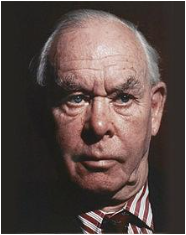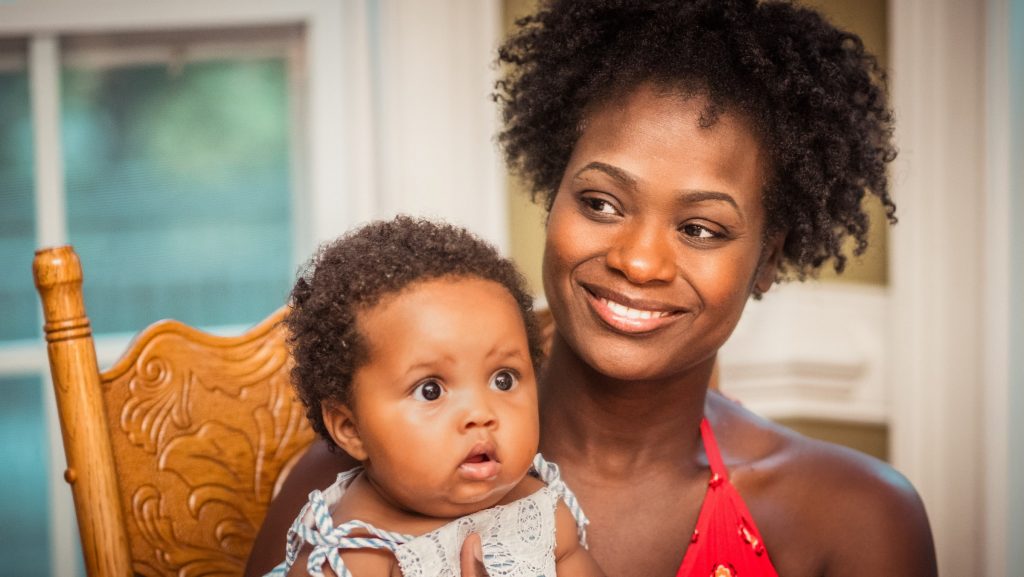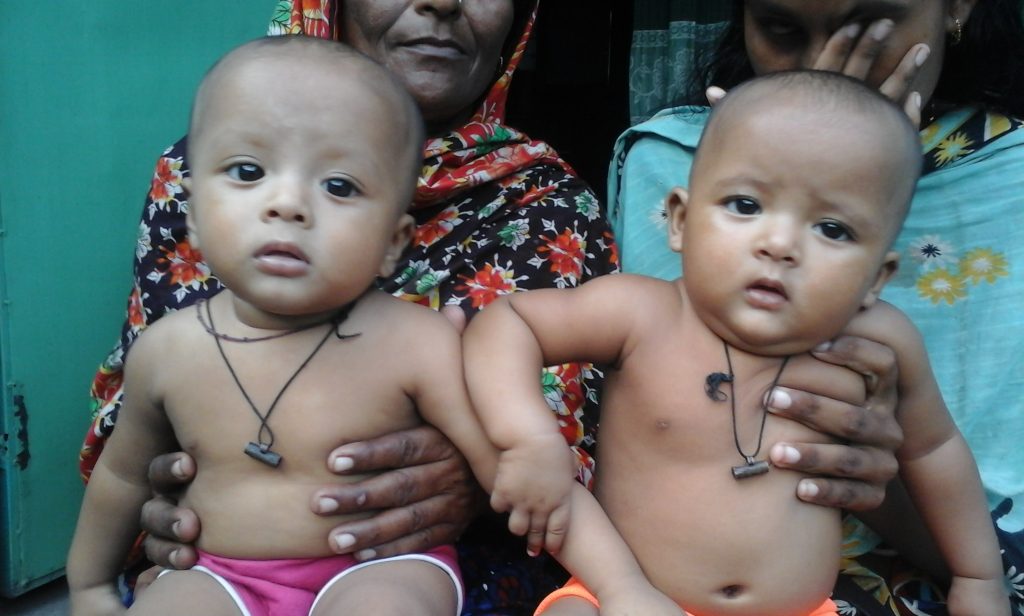
Freud’s psychoanalytic theory: According to Freud (1938) infants are oral creatures who obtain pleasure from sucking and mouthing objects. Freud believed the infant will become attached to a person or object that provides this pleasure. Consequently, infants were believed to become attached to their mother because she was the one who satisfied their oral needs and provided pleasure. Freud further believed that the infants will become attached to their mothers “if the mother is relaxed and generous in her feeding practices, thereby allowing the child a lot of oral pleasure” (Shaffer, 1985, p. 435). Was Freud correct in his explanation for why infants became attached?
Harlow’s research: In one classic study exploring if nursing was the most important factor to attachment, Wisconsin University psychologists Harry and Margaret Harlow investigated the responses of young monkeys. The infants were separated from their biological mothers, and two surrogate mothers were introduced to their cages. One, the wire mother, consisted of a round wooden head, a mesh of cold metal wires, and a bottle of milk from which the baby monkey could drink. The second mother was a foam-rubber form wrapped in a heated terrycloth blanket. The infant monkeys went to the wire mother for food, but they overwhelmingly preferred and spent significantly more time with the warm terrycloth mother. The warm terrycloth mother provided no food but did provide comfort (Harlow, 1958). The infant’s need for physical closeness and touching is referred to as contact comfort. Contact comfort is believed to be the foundation for attachment. The Harlows’ research confirmed that babies have social as well as physical needs. Both monkeys and human babies need a secure base that allows them to feel safe. From this base, they can gain the confidence they need to venture out and explore their worlds.
Bowlby’s theory: Building on the work of the Harlows and others, John Bowlby developed the concept of attachment theory. He defined attachment as the affectional bond or tie that an infant forms with the mother (Bowlby, 1969). An infant must form this bond with a primary caregiver in order to have normal social and emotional development. In addition, Bowlby proposed that this attachment bond is very powerful and continues throughout life. He used the concept of secure base to define a healthy attachment between parent and child (Bowlby, 1982). A secure base is a parental presence that gives the child a sense of safety as the child explores its surroundings.

Bowlby said that two things are needed for a healthy attachment: The caregiver must be responsive to the child’s physical, social, and emotional needs; and the caregiver and child must engage in mutually enjoyable interactions (Bowlby, 1969). Additionally, Bowlby observed that infants would go to extraordinary lengths to prevent separation from their parents, such as crying, refusing to be comforted, and waiting for the caregiver to return. He observed that these same expressions were common to many other mammals, and consequently argued that these negative responses to separation serve an evolutionary function. Because mammalian infants cannot feed or protect themselves, they are dependent upon the care and protection of adults for survival. Thus, those infants who were able to maintain proximity to an attachment figure were more likely to survive and reproduce.
Erikson: Trust vs. Mistrust
As previously discussed in chapter one, Erikson formulated an eight-stage theory of psychosocial development. Erikson was in agreement with Bowlby on the importance of a secure base, arguing that the most important goal of infancy was the development of a basic sense of trust in one’s caregivers. Consequently, the first stage, trust vs. mistrust, highlights the importance of attachment. Erikson maintained that the twelve to eighteen months of life involves the establishment of a sense of trust (Erikson, 1982). Infants are dependent and must rely on others to meet their basic physical needs as well as their needs for stimulation and comfort. A caregiver who consistently meets these needs instills a sense of trust or the belief that the world is a trustworthy place. The caregiver should not worry about overly indulging a child’s need for comfort, contact, or stimulation.
Problems establishing trust: Erikson (1982) believed that mistrust could contaminate all aspects of one’s life and deprive the individual of love and fellowship with others. Consider the implications for establishing trust if a caregiver is unavailable or is upset and ill-prepared to care for a child. Or if a child is born prematurely, is unwanted, or has physical problems that make him or her less desirable to a parent. Under these circumstances, we cannot assume that the parent is going to provide the child with a feeling of trust.
Mary Ainsworth: The Strange Situation Technique
Developmental psychologist Mary Ainsworth, a student of John Bowlby, continued studying the development of attachment in infants. Ainsworth and her colleagues created a laboratory test that measured an infant’s attachment to their parent. The test is called the Strange Situation Technique because it is conducted in a context that is unfamiliar to the child and therefore likely to heighten the child’s need for his or her parent (Ainsworth, 1979).
During the procedure, which lasts about twenty minutes, the parent and the infant are first left alone while the infant explores the room full of toys. Then a strange adult enters the room and talks for a minute to the parent, after which the parent leaves the room. The stranger stays with the infant for a few minutes, and then the parent again enters and the stranger leaves the room. During the entire session, a video camera records the child’s behaviours, which are later coded by trained coders. The investigators were especially interested in how the child responded to the parent leaving and returning to the room, referred to as the “reunion.” On the basis of their behaviours, the children were categorized into one of four groups where each group reflects a different kind of attachment relationship with the parent. One style is secure and the other three styles are referred to as insecure.
- A child with a secure attachment style usually explores freely while the parent is present and may engage with the stranger. The child will typically play with the toys and bring one to the parent to show and describe from time to time. The child may be upset when the parent departs, but is also happy to see them return.
- A child with an ambivalent (sometimes called resistant) attachment style is wary about the situation in general, particularly the stranger, and stays close or even clings to the parent rather than exploring the toys. When the parent leaves, the child is extremely distressed and is ambivalent when they return. The child may rush to the parent, but then fails to be comforted when picked up. The child may still be angry and even resist attempts to be soothed.
- A child with an avoidant attachment style will avoid or ignore the parent, showing little emotion when they depart or return. The child may run away from the parent when they approach. The child will not explore very much, regardless of who is there, and the stranger will not be treated much differently from the parent.
- A child with a disorganized/disoriented attachment style seems to have an inconsistent way of coping with the stress of the strange situation. The child may cry during the separation, but avoid the parent when they return, or the child may approach the parent but then freeze or fall to the floor.
It is estimated that about 65 percent of children in the United States are securely attached. Twenty percent exhibit avoidant styles and 10 to 15 percent are ambivalent. Another 5 to 10 percent may be characterized as disorganized.

Some cultural differences in attachment styles have been found (Rothbaum, Weisz, Pott, Miyake, and Morelli, 2010). For example, German parents value independence and Japanese mothers are typically by their children’s sides. As a result, the rate of avoidant attachments is higher in Germany and ambivalent or resistant attachments are higher in Japan. However, these differences reflect cultural variation rather than true insecurity (van Ijzendoorn and Sagi, 1999).
Keep in mind that methods for measuring attachment styles have been based on a model that reflects middle-class, US values and interpretation. Newer methods for assessment attachment styles involve using a Q-sort technique, in which a number of behaviours are recorded on cards and the observer sorts the cards in a way that reflects the type of behaviour that occurs within the situation (Waters, 1987). There are ninety items in the third version of the Q-sort technique, and examples of the behaviours assessed include:
- When child returns to parent after playing, the child is sometimes fussy for no clear reason.
- When the child is upset or injured, the child will accept comforting from adults other than parent.
- Child often hugs or cuddles against parent, without them asking or inviting the child to do so.
- When the child is upset by parent’s leaving, the child continues to cry or even gets angry after they are gone.
At least two researchers observe the child and parent in the home for 1.5 to 2 hours per visit. Usually two visits are sufficient to gather adequate information. The parent is asked if the behaviours observed are typical for the child. This information is used to test the validity of the Strange Situation classifications across age and culture, and with clinical populations.
Caregiver interactions and the formation of attachment: Most developmental psychologists argue that a child becomes securely attached when there is consistent contact from one or more caregivers who meet the physical and emotional needs of the child in a responsive and appropriate manner. However, even in cultures where parents do not talk, cuddle, and play with their infants, secure attachments can develop (LeVine et. al., 1994).
The ambivalent style occurs when the parent is insensitive and responds inconsistently to the child’s needs. Consequently, the infant is never sure that the world is a trustworthy place or that they can rely on others without some anxiety. A caregiver who is unavailable, perhaps because of marital tension, substance abuse, or preoccupation with work, may send a message to the infant they cannot rely on having needs met. An infant who receives only sporadic attention when experiencing discomfort may not learn how to calm down. The child may cry if separated from the caregiver and also cry upon their return. They seek constant reassurance that never seems to satisfy their doubt. Keep in mind that clingy behaviour can also just be part of a child’s natural disposition or temperament and does not necessarily reflect some kind of parental neglect. Additionally, a caregiver that attends to a child’s frustration can help teach them to be calm and to relax.
The avoidant style is marked by insecurity, but this style is also characterized by a tendency to avoid contact with the caregiver and with others. This child may have learned that needs typically go unmet and learns that the caregiver does not provide care and cannot be relied upon for comfort, even sporadically. An insecure avoidant child learns to be more independent and disengaged.
The disorganized/disoriented style represents the most insecure style of attachment and occurs when the child is given mixed, confused, and inappropriate responses from the caregiver. For example, a parent who suffers from schizophrenia may laugh when a child is hurting or cry when a child exhibits joy. The child does not learn how to interpret emotions or to connect with the unpredictable parent. This type of attachment is also often seen in children who have been abused. Research has shown that abuse disrupts a child’s ability to regulate their emotions (Main and Solomon, 1990).

Caregiver consistency: Having a consistent caregiver may be jeopardized if the infant is cared for in a daycare setting with a high turnover of staff or if institutionalized and given little more than basic physical care. Infants who, perhaps because of being in orphanages with inadequate care, have not had the opportunity to attach in infancy may still form initial secure attachments several years later. However, they may have more emotional problems with depression and anger, or be overly friendly as they interact with others (O’Connor et. al., 2003).
Social deprivation: Severe deprivation of parental attachment can lead to serious problems. According to studies of children who have not been given warm, nurturing care, they may show developmental delays, failure to thrive, and attachment disorders (Bowlby, 1982). Non-organic failure to thrive is the diagnosis for an infant who does not grow, develop, or gain weight on schedule. In addition, postpartum depression can cause even a well-intentioned mother to neglect her infant.
Reactive attachment disorder: Children who experience social neglect or deprivation, repeatedly change primary caregivers that limit opportunities to form stable attachments, or are reared in unusual settings (such as institutions) that limit opportunities to form stable attachments can certainly have difficulty forming attachments. According to the Diagnostic and Statistical Manual of Mental Disorders, 5th edition (American Psychiatric Association, 2013), those children experiencing neglectful situations and also displaying markedly disturbed and developmentally inappropriate attachment behaviour, such as being inhibited and withdrawn, minimal social and emotional responsiveness to others, and limited positive affect, may be diagnosed with reactive attachment disorder. This disorder often occurs with developmental delays, especially in cognitive and language areas. Fortunately, the majority of severely neglected children do not develop reactive attachment disorder, which occurs in less than 10 percent of such children. The quality of the caregiving environment after serious neglect affects the development of this disorder.
Resiliency: Being able to overcome challenges and successfully adapt is resiliency. Even young children can exhibit strong resiliency to harsh circumstances. Resiliency can be attributed to certain personality factors, such as an easy-going temperament. Some children are warm, friendly, and responsive, whereas others tend to be more irritable, less manageable, and difficult to console, and these differences play a role in attachment (Gillath, Shaver, Baek, and Chun, 2008; Seifer, Schiller, Sameroff, Resnick, and Riordan, 1996). It seems safe to say that attachment, like most other developmental processes, is affected by an interplay of genetic and socialization influences.
Receiving support from others also leads to resiliency. A positive and strong support group can help a parent and child build a strong foundation by offering assistance and positive attitudes toward the newborn and parent. In a direct test of this idea, Dutch researcher van den Boom (1994) randomly assigned some babies’ mothers to a training session in which they learned to better respond to their children’s needs. The research found that these mothers’ babies were more likely to show a secure attachment style in comparison to the mothers in a control group that did not receive training.

